Photo-of-the-day: Maxime-09Feb2022.jpg
Journalist Report – February 9th
Sol 9: Focus on: Mars’ Atmosphere – LOAC, Mega-ARES, Purple Air, and weather station
Author: Pierre Fabre
Hi everyone! Welcome back to this new report! Today is a new episode of “Focus on”, our format in which we talk about the experiments we brought with us on Mars. In this episode, we are going to talk about several experiments we perform for the French center of scientific research that aim at gathering data about the air on Mars. This will surely be very interesting!
But before, as usual, let’s talk about what happened during this Sol 9 on Mars!
I have to talk to you about something. At MDRS, the toilet goes directly into a tank. One of the missions of Francois, our engineer, is to empty that tank when it is full. I can assure you that this is not a pleasure at all and for all of us, he is kind of the hero of this station. Since the beginning of the mission, we’ve noticed that he had to empty that tank way too frequently. This morning, the tank was full again and with the help of our Commander, they decided to finally address the problem.
They discovered that there was a solid part (yes, this is disgusting) at the bottom of the tank and that was the reason why the tank was getting full so fast. We will hopefully now be able to find a solution to this issue knowing the origin! We really owe them one on this one. When we will be back on Earth, we will definitely offer them a good Earthly burger to thank them for their courage and their devotion.
The EVA of this morning was dedicated to my experiment of 3D mapping with drones. Without spoiling what will be said in a future episode of « Focus on », this experiment aims, in short, at showing that having a 3D map while preparing your EVA’s itinerary makes you safer during the EVA and less tired at the end of it. Now that we know that drones can fly on Mars thanks to Ingenuity, it can be interesting to question their usefulness. A potential use can be to avoid Marsonauts taking useless risks or losing energy in vain on a hard path if a better path can be found by a drone.
For that purpose, I will compare how my crewmates perform at reaching the summit of North Ridge regarding whether or not they had the 3D map during their preparation. I already said too much but it will be clearer in the « Focus on » episode so don’t miss it!
So, as I was saying, this morning we went to North Ridge and reached its summit for the first time. It was a great moment and we were really happy to contemplate the Hab from the top of the same Ridge we see from the kitchen’s window. Tomorrow, the crew members that stayed at the Hab this morning will do the same ascent of North Ridge and then I will be able to analyse the data from the whole crew.
This afternoon, after all the energy he lost in the toilet’s tank this morning, Francois, our Engineer, and friendly neighbourhood hero, still managed to find the motivation to work on our spacesuits. In fact, some crew members noticed two or three days ago that the air cooling in their helmets was not as strong as at the beginning of the mission.
This can be a huge problem for physically demanding EVAs like the one we did this morning because during the effort the helmet fogs up and you lose your visibility. Losing your visibility means you might fail to see a rock on the floor and fall. I can assure you that falling during an EVA, with a heavy spacesuit on your back and the risk of breaking your helmet, is all you want to avoid!
After some tests, he discovered that the issue came from the batteries. Since yesterday, he has been performing tests on the batteries and on their chargers to find what was the issue and how to fix it. He is exchanging with the staff of the MDRS that gives him advice on what to do regarding the results of the tests he performed. He is getting close and we know he will succeed soon! Francois will soon have the opportunity to talk to you directly about his work at MDRS in an episode of « Interview with » dedicated to the Engineer so don’t miss it!
But now it is time to talk about science, it is time for the « Focus on »!
“-Ok Clément, so first, why did we bring those experiments with us?
-Well, we’re lucky enough at MDRS that the terrain and environment we work in resembles, in many ways, things we can expect to find on Mars. In particular, what we have here is a particularly arid environment, with lots of dust that can be kicked up by winds. So, this is a good testbed for the study of atmospheric phenomena we could expect to see there.
In particular, one of the atmospheric events that can have a big impact on a Martian mission is dust storms. They can get extremely large, and have an effect on the efficiency of solar panels, visibility on terrain, or also long-distance communications. This is why developing tools to study the presence and characteristics of this dust in the air, and the properties of the atmosphere during those events can be very useful for ensuring the safety of the first people to set foot on Mars. This is the main purpose of these experiments.
-Ok that’s cool! What is LOAC?
LOAC stands for Light Optical Aerosol Counter. This is a piece of equipment that was developed in an atmospheric sciences laboratory in Orléans, France, for the purpose of counting particles of dust in the air, their sizes, and the flow – this is very helpful to study the composition of dust storms. It’s been used in numerous campaigns not only on the ground but also in the upper atmosphere on high altitude balloons, and it’s even planned for a launch on a nanosatellite to ensure it is space ready for a potential launch to another planet!
-Ok, that first one is cool! And what is Mega-ARES?
-Mega-ARES is an instrument that measures the electric field in the air near the ground. There are many atmospheric events that can modify the electric field, and dust particles rubbing on one another can create electric charges in the air that can be measured by this very sensitive equipment. In the dust storms of Mars, we’re studying the possibility that large amounts of friction can cause electric currents in the air. So, when particles are heavy in the air and hit each other between the large antenna of the tool and the ground, or hit the antenna directly, it gets detected. While LOAC measures the types of particles in the air, Mega-ARES studies the influence these particles have on the low atmosphere.
Mega-ARES is the bigger, Earth-primed brother of Micro-ARES, which was a payload on the Schiaparelli lander designed by the European Space Agency, and that was scheduled to land on Mars around 10 years ago. Unfortunately, the lander failed when arriving on the Red Planet, and the researchers are hard at work trying to get it on a mission in the future. In the meantime, tests like those done at MDRS help gather data that shows how useful this sort of tool could be on Mars.
-Those experiments were both brought by previous Supaéro crews but this year we have a newcomer. What is Purple Air?
-PurpleAir is a tool for measuring air quality – this means it detects some particles that could be linked to human activity. It’s a very useful extra tool to have all the details we need for the other experiments. Both of them work better far away from human influence and will gain valuable data from knowing more about the composition of some of the particles in the air.
-And why is the weather station so important?
-The weather station is a great tool for double-checking our data – many experiments do their own measurements of temperatures and other data, but getting this specific information twice helps us make sure that there are no issues with the equipment. In addition to this, knowing wind speed and direction are important pieces of data to correlate with the measurements from the tool, for the obvious reason that high winds create dust storms, which are the important things we’re studying with these experiments.
As an aside, the station directly emits data to our receivers in the station, which helps us get live data about the outside conditions – and that’s been particularly helpful for those few times with high winds where, unfortunately, that station got knocked over!”
Okay, that’s it for this episode of “Focus on”! I hope you enjoyed it and that you learned something! I can’t wait for the next episode to tell you more about our experiments!
EVA Report – February 9th
Crew 240 EVA Report 09Feb2022
EVA # 9
Author: Pierre Fabre
Purpose of EVA: Change of batteries for the atmospheric experiment, and carrying out EVA based on 3D maps for summiting of the North Ridge
Start time: 10:01 am
End time: 11:22 am
Narrative: Battery change was carried out nominally. The ascent went extremely well, aided by the 3D maps, which have proved a very valuable asset, and allowed us to return much earlier than previously estimated.
Destination: North Ridge
Coordinates (use UTM NAD27 CONUS): 518 500, 425 0500
Participants: Pierre Fabre, Maxime Jalabert, Clément Plagne, Marion Burnichon
Road(s) and routes per MDRS Map: Entrance Road, Cow Dung Road
Mode of travel: Rovers, foot
Operations Report – February 9th
Crew 240 Operations Report 09-02-2022
SOL: 9
Name of person filing report: François Vinet
Non-nominal systems: NA
Notes on non-nominal systems: NA
ROVERS
Spirit rover used: no
Hours: 154.8
Beginning charge: NA
Ending charge: NA
Currently charging: managed by Atila
Opportunity rover used: yes
Hours: 83.6
Beginning charge: 100%
Ending charge: 97%
Currently charging: left uncharged, managed by Atila
Curiosity rover used: no
Hours: 166.5
Beginning charge: NA
Ending charge: NA
Currently charging: managed by Atila
Perseverance rover used: yes
Hours: 226.9
Beginning charge: 100%
Ending charge: 95%
Currently charging: left uncharged, managed by Atila
General notes and comments: NA
Summary of Hab operations:
WATER USE: 59 gallons
Water (static tank): 185 gallons
Water (loft tank): 29 gallons
Water Meter: 0155656.2 units
Static to Loft Pump used – yes
Static tank pipe heater (on or off): on
Static tank heater (On or off): on
Toilet tank emptied: yes (we followed the procedure given by Shannon to see if there is some solid matter in the corners of the tank. There is indeed probably some matter in the corners (Clément sent an email with the results). We put a lot of water in the tank, while it was emptying but it is unfortunately not sufficient to fix that problem).
Summary of internet: NA
Summary of suits and radios: To continue about the problem of yesterday about the charge of the batteries, our engineer is still doing some tests about it but the batteries seem ok (at least 3 of them which have been tested).
Summary of GreenHab operations:
WATER USE: 12 gallons at 7:50 am and 8 gallons at 7 pm
Heater: On
Supplemental light: On
Harvest: 290 grams cherry tomatoes
Summary of ScienceDome operations:
Dual split: off
SOC: 53% at 7.00pm
Summary of RAM operations: NA
Summary of any observatory issues: NA
Summary of health and safety issues: A sanitary problem occurred but was fixed with Atila and Shannon.
Questions, concerns and requests to Mission Support: NA
Sol Summary – February 9th
Crew 240 Sol Summary Report 09Feb2022
Sol: 9
Summary Title: Into the thick of it
Author’s name: Clément Plagne
Mission Status: Nominal
Sol Activity Summary: In what I hope will remain the one and only “Horror Episode” report, it’s a necessity to admit that today has been more memorable from its somewhat disgusting than for the other successes it’s seen, for the many there’s been.
I feel the need to spare you most of the events and stick to their conclusions. I’d started a rather drawn out and creatively narrated retelling of the awful things we’ve had to do today, after which I thought to myself “Clément, this is a terrible idea”. So to keep to the results: the toilet’s tank likely has some impacted material that’s stuck in there. Warm water and numerous flushes out have not got us far out of it, so that’s not over. Regarding the rodent situation, everything has been fixed.
On to the successes: the 3D maps made by Pierre have generated some great new possibilities for EVA prevision. The accuracy of these things astounds me, and I wouldn’t be surprised if, in some years, every crew had a lightweight drone capable of making 3D maps and finding routes automatically before every EVA.
Look Ahead Plan: Continuing 3D Map testing tomorrow, pursuing work.
Anomalies in work: Some rodent-based issues already worked out with the Station Director and Assistant Director. Spacesuit issues detailed in Operations Report.
Weather: Is it still February?! (very warm)
Crew Physical Status: A tiny bit grossed out but overall fine
EVA: One done, carried out nominally.
Reports to be filed: Sol Summary, EVA Report, EVA Request, HSO Report, Operations Report, Journalist Report, Crew Pictures
Support Requested: As the diagnostics of the spacesuit appear to be faulty batteries, and as the backups in the EVA Room are also marked as dead, we’re probably going to need some more.


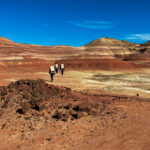
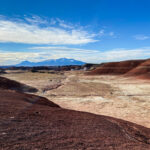
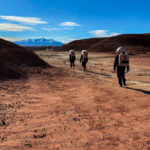
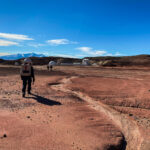
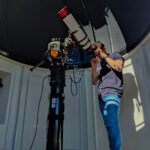
You must be logged in to post a comment.